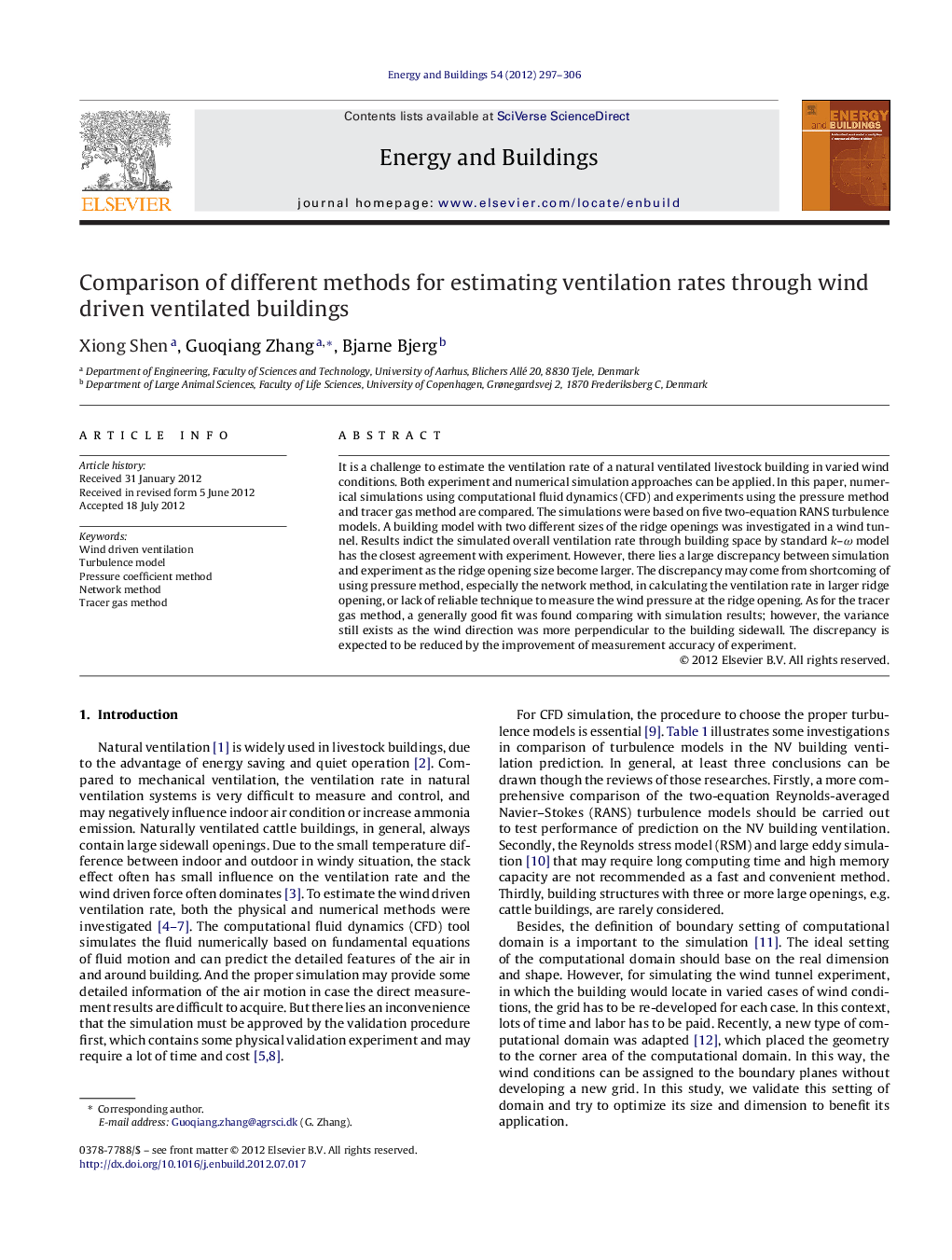| Article ID | Journal | Published Year | Pages | File Type |
|---|---|---|---|---|
| 263662 | Energy and Buildings | 2012 | 10 Pages |
It is a challenge to estimate the ventilation rate of a natural ventilated livestock building in varied wind conditions. Both experiment and numerical simulation approaches can be applied. In this paper, numerical simulations using computational fluid dynamics (CFD) and experiments using the pressure method and tracer gas method are compared. The simulations were based on five two-equation RANS turbulence models. A building model with two different sizes of the ridge openings was investigated in a wind tunnel. Results indict the simulated overall ventilation rate through building space by standard k–ω model has the closest agreement with experiment. However, there lies a large discrepancy between simulation and experiment as the ridge opening size become larger. The discrepancy may come from shortcoming of using pressure method, especially the network method, in calculating the ventilation rate in larger ridge opening, or lack of reliable technique to measure the wind pressure at the ridge opening. As for the tracer gas method, a generally good fit was found comparing with simulation results; however, the variance still exists as the wind direction was more perpendicular to the building sidewall. The discrepancy is expected to be reduced by the improvement of measurement accuracy of experiment.
► We study tracer gas and pressure methods to estimate air change in natural ventilation. ► CFD methods are tested comparing with the measurements. ► Unbalance of net flow rate at sidewall and ridge openings is found in experiments. ► Uncertainty of using pressure method became large when ridge opening increases. ► Standard k–ω model shows best performance for estimating the ventilation rate.
